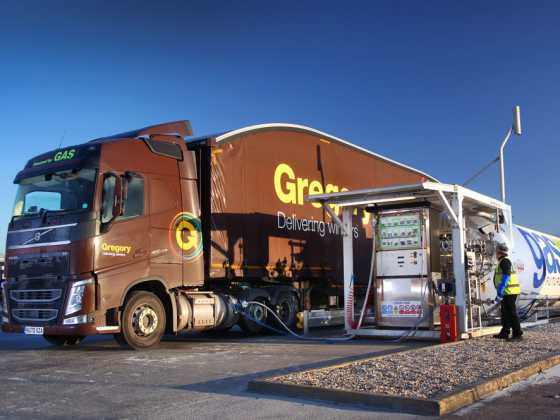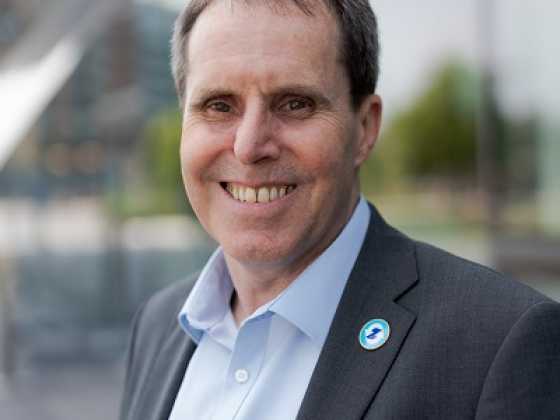Roundtable: the transition to electric

Greater Manchester is due to introduce the largest proposed Clean Air Zone outside London from 2021. To find out how they could be affected and to learn about the transition to electric vehicles, a diverse mix of fleet operators attended GreenFleet’s roundtable on 27 February
The proposed Clean Air Zone in Greater Manchester is due to be implemented in 2021. It would initially mean that buses, coaches, HGVs, taxis, and private hire vehicles that do not meet government-specified emission standards would be required to pay a daily charge to drive in Greater Manchester. Non-compliant vans would be included from 2023.
These measures, together with the proposed 2035 petrol and diesel vehicle ban, is focusing fleets’ attention on moving to cleaner vehicles.
To learn more about the proposed clean air measures and to learn from others on how to transition to an electric fleet, a mix of local fleet operators attended GreenFleet’s roundtable on 27 February at the Etihad Stadium.
The proposed Clean Air Zone is one of the measures set out in Greater Manchester’s Clean Air Plan, which is designed to bring nitrogen dioxide air pollution levels in the region within legal limits as quickly as possible.
The proposals also include, subject to government funding, a major package of clean vehicle funds to help affected Greater Manchester businesses upgrade their fleets with compliant vehicles, and trebling the size of the region’s publicly owned electric vehicle charging point network.
The Clean Air Plan proposals are being developed by Greater Manchester’s 10 local authorities and Transport for Greater Manchester (TfGM).
Jason Smith, clean air delivery officer at TfGM, explained that the Clean Air Plan proposals, including the Clean Air Zone, cover the whole of Greater Manchester, an area of more than 500 square miles.
Acknowledging that electric van choice and availability, particularly in the used market, is not as large as passenger cars, Jason explained that Greater Manchester’s intention to delay inclusion of non-compliant vans in the Clean Air Zone until 2023 takes this into account.
EV charging
The public charging infrastructure was a topic that came up time and again. Site selection was highlighted as key, as many public charge points installed in the early days were installed in a rush and put in inappropriate places.
To remedy this issue in Greater Manchester, Jason told delegates that a new charge point operator had been appointed and will be working to replace the network, with site selection being a vital consideration.
Workplace charging was also the focus of a lively discussion. To help with the costs, the Work Place Charging Scheme (WCS) from the Office of Low Emission Vehicles (OLEV) covers some of the purchase and installation costs, up to a maximum of £350 for each socket, and up to a maximum of 40 across all sites for each applicant.
Stephen Todd from East Riding of Yorkshire Council explained that the grant brings the cost of workplace charges right down. And by getting the council’s street lighting team to do the installation, he was able to save further money.
Discussing the issue of workplace charging, Maria Bate from Clarke Energy explained that her company had to upgrade the electrics of the building to accommodate 20 charge points, but the building has now reached maximum power capacity. “We wanted to install more charge points last year but it required a massive electrical upgrade. We have staff that want electric vehicles but we can’t accommodate them,” explained Maria.
In this instance, load balancing can help. Roundtable host and charging infrastructure specialist Kate Armitage explained that load balancing means you can install further charging points without changing connection capacity as power is distributed equally.
Sophisticated back office software can also charge depending on what vehicles are needed when.
Kate stressed the importance of finding out how back office systems work when choosing charge point providers. Questions should be asked on whether systems are interoperable and whether they are OCPP (Open Charge Point Protocol) compliant. The OCPP offers a uniform method of communication between charging station and Charging Station Management System (CSMS), meaning it is possible to connect any CSMS with any charging station, regardless of the vendor.
Workplace chargers will become commonplace in the future as there is an EU Buildings Directive coming into force by 2025 that will require employers to install chargers in 20 per cent of all company parking spaces.
Banning petrol and diesel vehicles
The government has plans to bring forward the end date for the sale of new petrol and diesel cars and vans from 2040 to 2035. It is also considering including hybrids for the first time, which has come as quite a shock to the industry.
Until quite recently, there have been generous subsidies offered for plug-in hybrids. But it seems that policy is now considering the real impact of hybrids, as various studies report that PHEVs could actually be emitting more CO2 than equivalent petrol-only cars due to extra battery weight. There is also the risk that drivers do not charge them.
While hybrids have played an important role in getting drivers used to electric motoring, they are no longer needed as much as they once were due electric vehicles (EVs) approaching cost parity and achieving longer range.
Adam Forbes from Stockport Council explained how they currently have three Nissan eNV200s, and that the total cost of ownership (TCO) for these vehicles is the same as diesel, if you exclude the initial cost of the recharging infrastructure.
Delegates were asked about their reaction to government’s 2035 plans. There was a consensus around the table that plans to include hybrids caught everyone by surprise.
Adam commented that the 2035 ban on petrol and diesel vehicles “makes a stronger business case to switch to electric vehicles”.
Overall, delegates agreed that 15 years is enough time to plan for electric vehicles, but mainly for passenger cars and some vans. For HGVs, specialist emergency vehicles and plant equipment, longer is needed and other technologies must be investigated, particularly hydrogen.
Getting EVs on fleet
A number of fleets around the table had made use of the Energy Saving Trust’s fleet consultancy. The organisation will conduct full analysis of a fleet’s data and produce its recommendations in an in-depth report.
Event sponsor Mark Barrett from Harris Group (LDV / Maxus) – makers of the electric EV80 and soon to be launched DELIVER 9 & e deliver 3 – explained how the company can also help organisations understand if electric vehicles would suit their operations, by analysing routes and data. Crucially, however, if electric vehicles do not suit a company, then LDV / Maxus will never attempt to sell them.
The best way to see if an electric vehicle would suit a fleet’s operations, according to Mark, is to “get a demo vehicle and use it in your own environment.”
Speaking about the lesser known benefits of electric vehicles, Mark added: “Electric vehicles have 75 per cent less maintenance costs than ICE vehicles. Regenerative braking also minimises brake wear.”
LDV / Maxus’ approach to battery maintenance and replacement was well received by delegates. The company has the ability to check the health of batteries at cell level and the design of the battery allows them to replace cells (rather than the whole battery), which is more cost effective and allows the battery life to be prolonged.
A smooth transition to electric
Delegates were asked what they would ask of the government to make it easier to transition to electric vehicles. Improvements to the infrastructure were brought up, including being interoperable and consistent, and to offer rapid chargers using contactless payment.
Certainty over BIK for electric vehicles in four years time was also raised.
In summary, the CAZ proposed for Greater Manchester, together with the future ban on pure petrol and diesel vehicles – is focusing fleets’ attention on moving to electric vehicles. Concerns were still raised about the public charging infrastructure, and for those installing charge points, site selection was highlighted as key to making it work.
Delegates were mostly positive about electric vehicles and agreed they can work in many applications. However, HGVs and specialist vehicles such as for the emergency services, needs further investment in technology.






